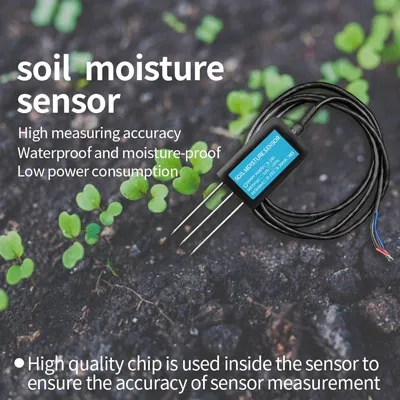
An ideal soil sensor should look like this!
Soil sensors are monitoring crop irrigation, soil air changes, and large-area surface detection.

Soil sensors are monitoring crop irrigation, soil air changes, and large-area surface detection.
Soil is a complex symbiosis composed of minerals, organic matter, water, air and organisms. Soil, atmospheric environment, water and plants also constitute a very complex ecosystem. The interaction and cross-effects of various factors lead to soil changes. There is a certain degree of uncertainty, which makes the measurement of soil more difficult.
Soil sensors monitor crop irrigation conditions, soil air changes, and large-area surface detection. Data on soil moisture, soil nitrogen, phosphorus and potassium content, soil electrical conductivity and salinity, etc. The sensor technology is in the development of precision agriculture It plays an increasingly important role to realize scientific monitoring, rational planting, help farmers resist and reduce disasters, improve comprehensive agricultural benefits, and promote the transformation and upgrading of modern agriculture.
The soil moisture sensor is composed of a stainless steel probe and a waterproof probe. It can be buried in the soil and dams for a long time to perform fixed-point monitoring and online measurement of the surface and deep soil moisture. Used in conjunction with a data collector, it can be used as a tool for fixed-point moisture monitoring or mobile measurement.
At present, the rapid measurement of soil conductivity/salinity in the field is mainly measured by a digital display soil conductivity/salt sensor. The principle uses a special metal material as the sensor to realize the rapid determination of soil conductivity/salinity, high concentration The soluble salts of sulphate can damage plants or cause the death of plant roots. Soil conductivity/salinity sensors can improve this situation.

The soil temperature sensor can monitor the temperature of the soil, the atmosphere and the water. A suitable soil temperature is conducive to the growth of plants. If the temperature is too low or too high, it is not conducive to the growth of plants. Crop seeds must germinate within a suitable soil temperature range. Within a certain temperature range, the higher the soil temperature, the faster the growth and development of crops, and the growth of different plants has different requirements for temperature. By monitoring the soil temperature, the soil temperature can be kept within the suitable growth temperature range of the crops, so as to ensure the increase of crop production and income.